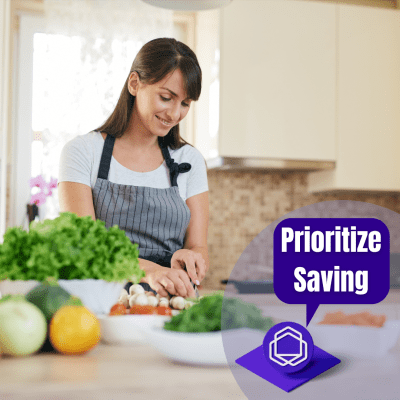10 Strategies to Save for a Down Payment
Saving for a down payment takes careful planning. This article outlines 10 strategies to help you save for your down payment.
Realtyless
5 minute read

10 strategies to save for a down payment
Buying a house is one of the biggest investments that most people make in their lifetime. Saving for a house down payment can seem like a daunting task, especially when housing prices continue to rise. However, with some careful planning, you can save for your down payment and reach your goal of homeownership. Here are ten strategies to help you save for your down payment.
-
Determine your down payment goal: Determine how much you need to save for your down payment. Typically, lenders require a down payment of at least 20% of the home's total cost for conventional loans.

-
Explore alternative financing options and assistance programs: Check if you qualify for alternative financing options or down payment assistance programs. FHA, VA, and USDA loans generally require a lower down payment than conventional loans. Some states and local governments offer down payment assistance programs for first-time homebuyers.

-
Create a budget: Take a close look at your monthly income and expenses. Create a realistic budget that allows you to save a specific amount each month towards your down payment.

-
Set a timeline: Determine the timeline it will take you to save for your down payment. Divide your down payment goal by the amount you will save each month to create an estimated timeline.

-
Open a down payment-specific high-yield savings account: Create a specific savings account just for your down payment. Look for a savings account with a high-interest rate as this can help your savings grow faster. Many online banks offer higher interest rates than traditional brick-and-mortar banks.

-
Set up automatic transfers: Make saving easier by setting up an automatic transfer from your checking account to your savings account each month. Use the budget you created in step three to determine the transfer amount.

-
Make saving a priority: Before making reservations at a fancy restaurant or booking an expensive vacation, think about how that money could go towards your dream of homeownership. Decide which purchases you can cut back on and make saving for your down payment a priority.

-
Reduce high-interest debt: High-interest debt such as credit card debt can eat into your savings. Pay down your existing debt as much as possible. This can free up more money to put towards your down payment and increase your credit score when you’re ready to apply for a loan.

-
Look for ways to earn extra income: Consider taking on a side job or selling unused items around your home to increase your income and put more money towards your down payment.

-
Be patient and stay focused: Saving for a down payment can take time and require discipline. Stay focused on your goal, and be patient as you work towards it.

Conclusion
Saving for a house down payment is a significant financial goal that requires careful planning and discipline. By creating a budget, opening a high-yield savings account, creating automatic transfers, exploring ways to earn extra income, and making saving a priority, you can increase your chances of reaching your goal. The saving process is a marathon rather than a sprint, remember to stay focused, be patient, and celebrate your progress along the way.